The museum
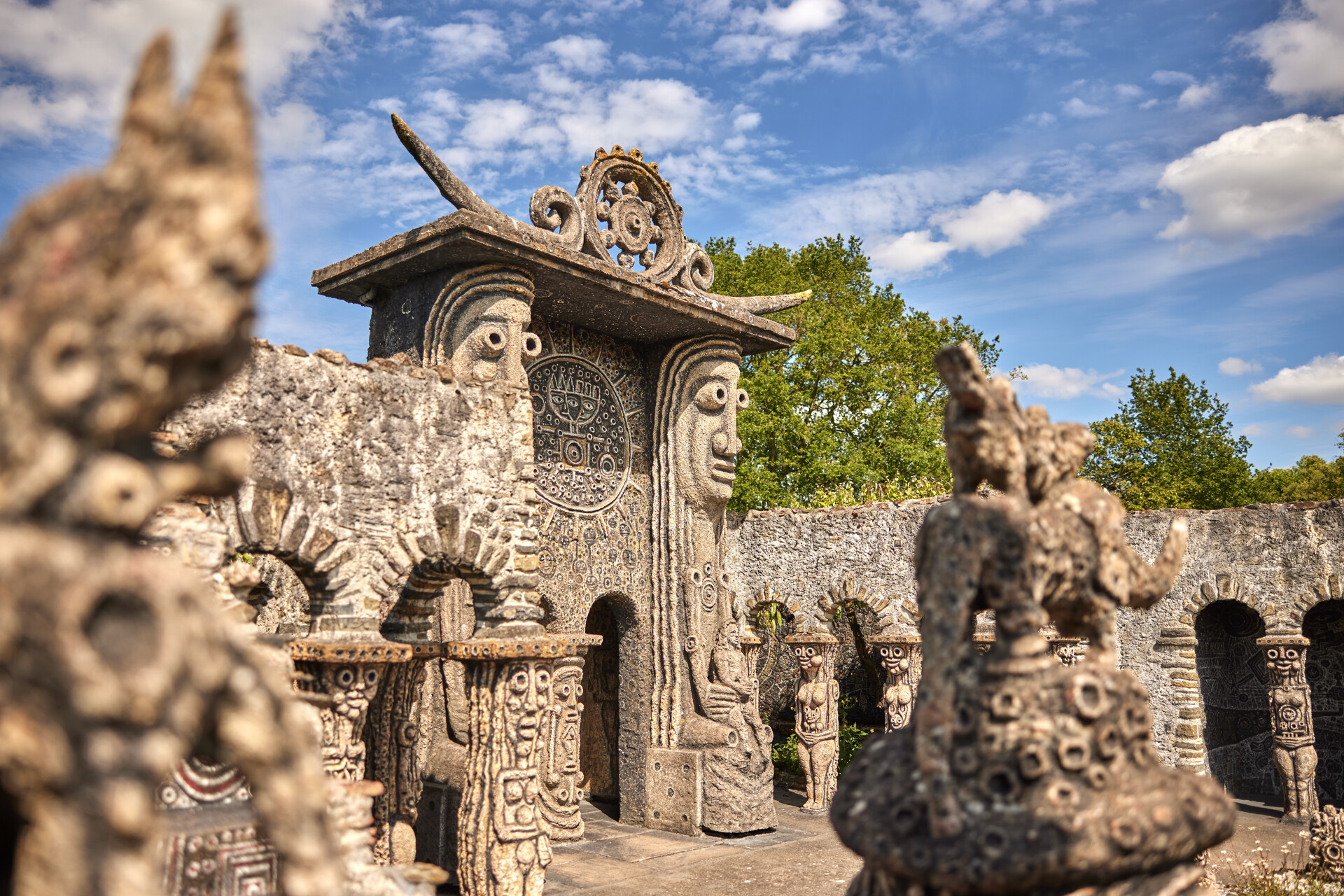
ARCHISCULPTURE
At the age of 60, Robert Tatin, a recognized artist as much as a painter as a ceramist, imagined and undertook the creation of a monumental sculptural work built around his house in Cossé-le-Vivien.
He took advantage of the experience he shared with the builders of Brasilia and the technical discoveries made with reinforced cement mortar to create a unique and spectacular ‘arch-sculpture’ over a period of 21 years, based on numerous plans and drawings. Protected as a historical monument since January 2022, this dreamlike work offers the visitor an inner journey, full of references to distant civilizations. Everyone can find an echo to his own culture and participate in the history of humanity.
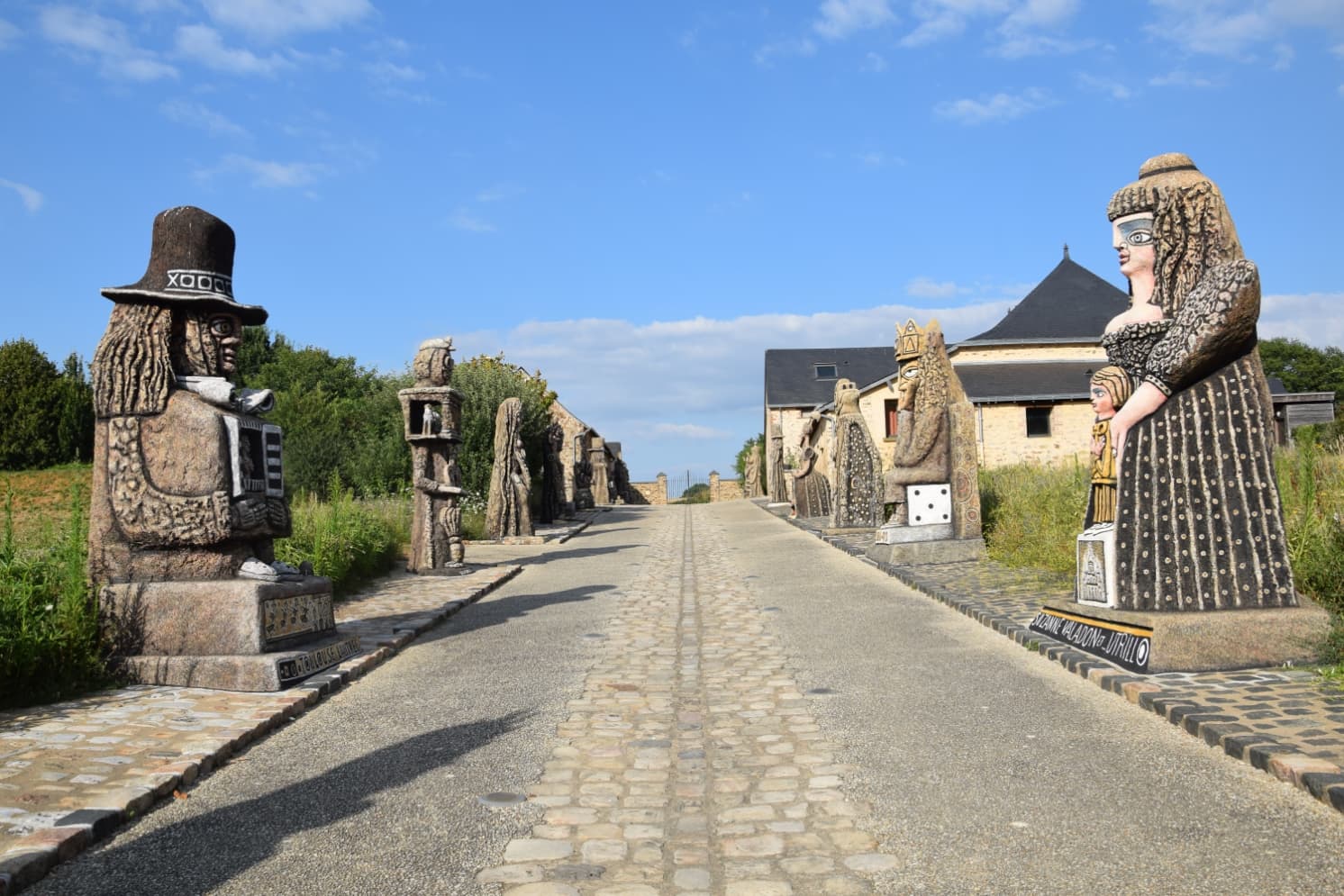
The Alley of Giants
Like an initiatory journey, this Alley of Giants, framed by 19 monumental statues in painted cement, opens the perspective that leads to the ‘L’étrange musée Tatin’.
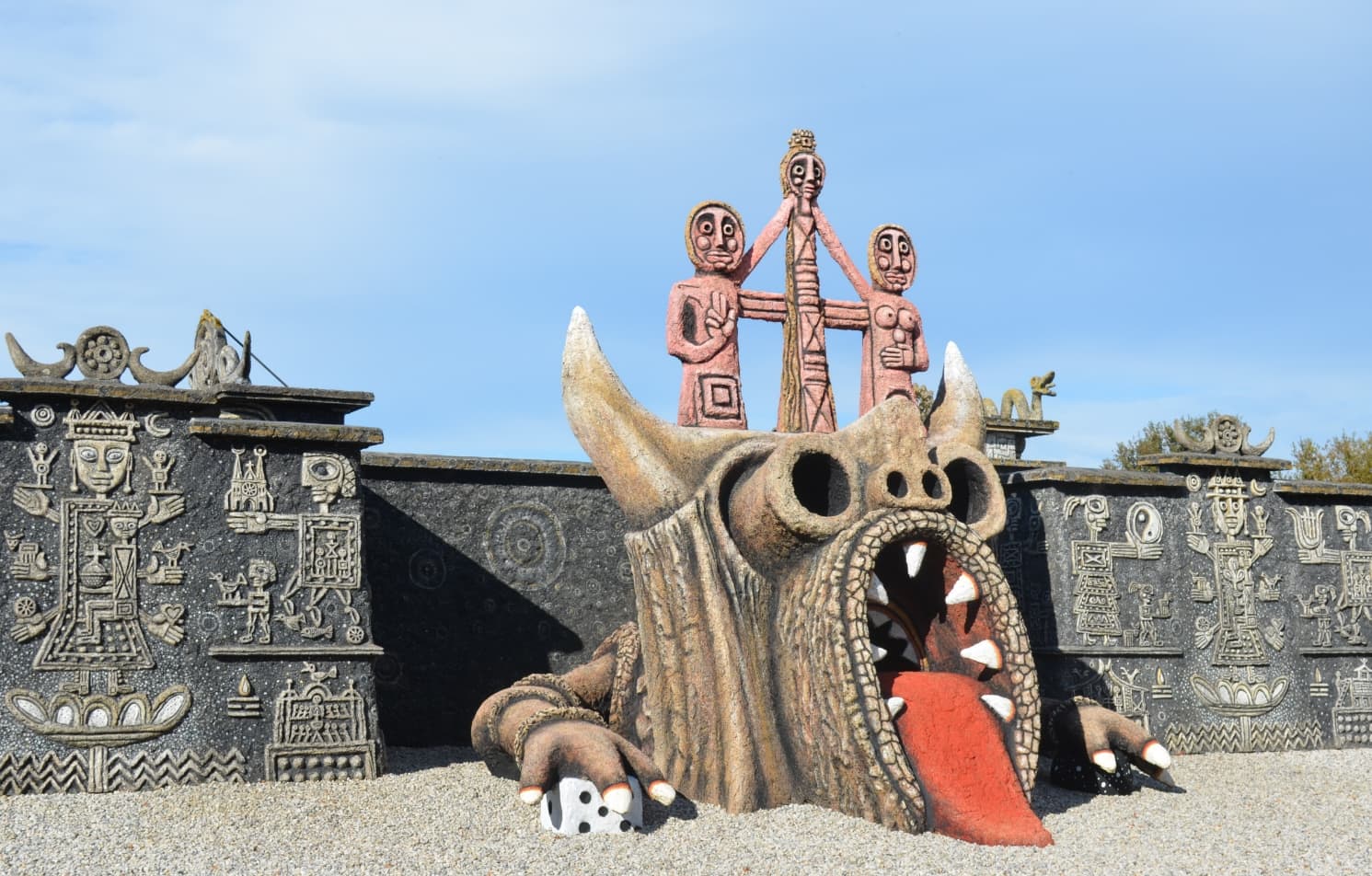
The Dragon
The Dragon is the benevolent guardian of the heart of the museum, from which no visitor can escape. It is a symbolic entrance into the artist’s world.
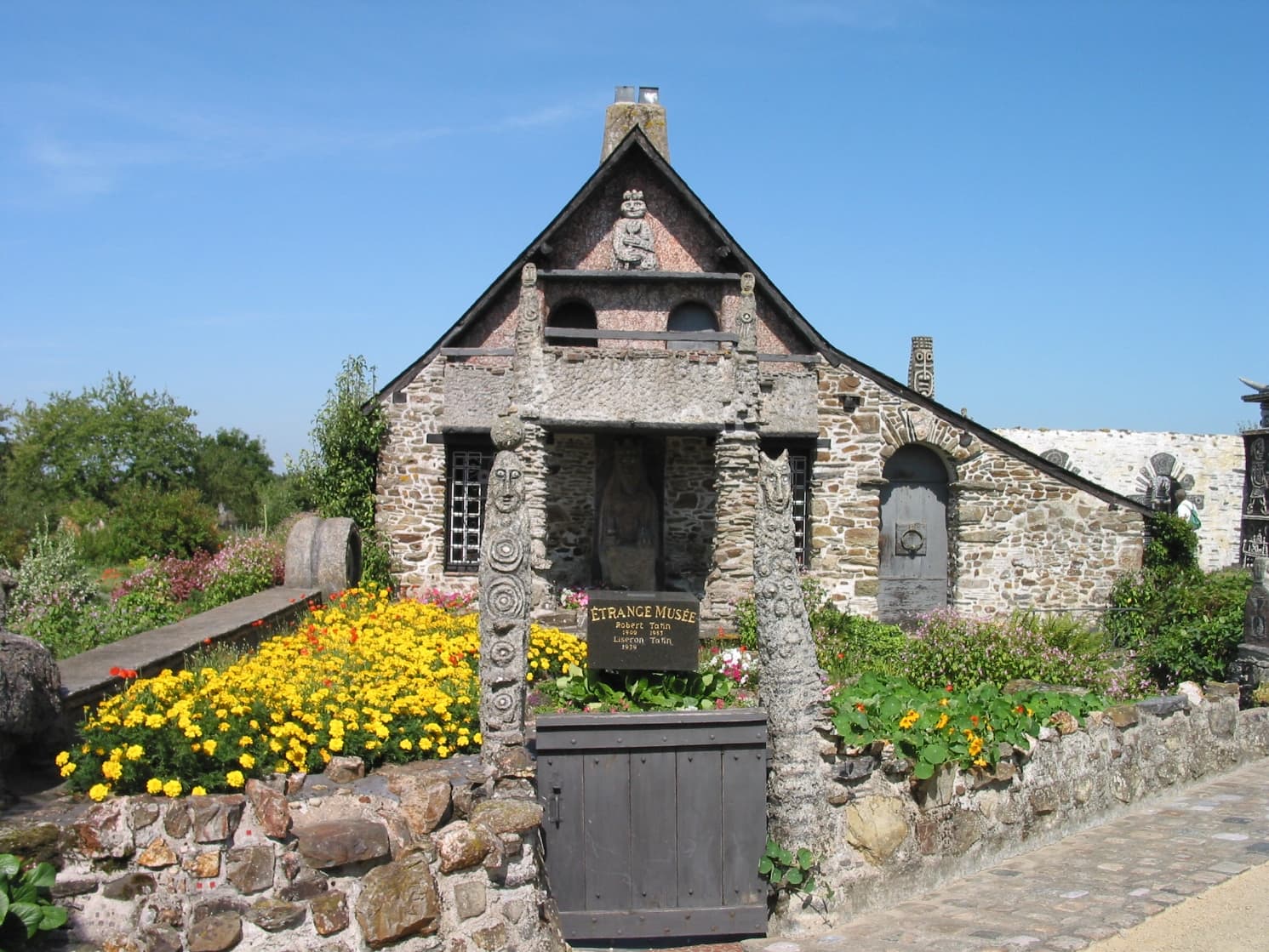
The artist’s house
The house where Robert and Lise Tatin lived in Cossé-le-Vivien was awarded the “Maison des Illustres” label by the Ministry of Culture in 2012. “These places show how much heritage is a living territory, how much it is nourished by the personalities and sensibilities of those who have left their mark and lived there”.
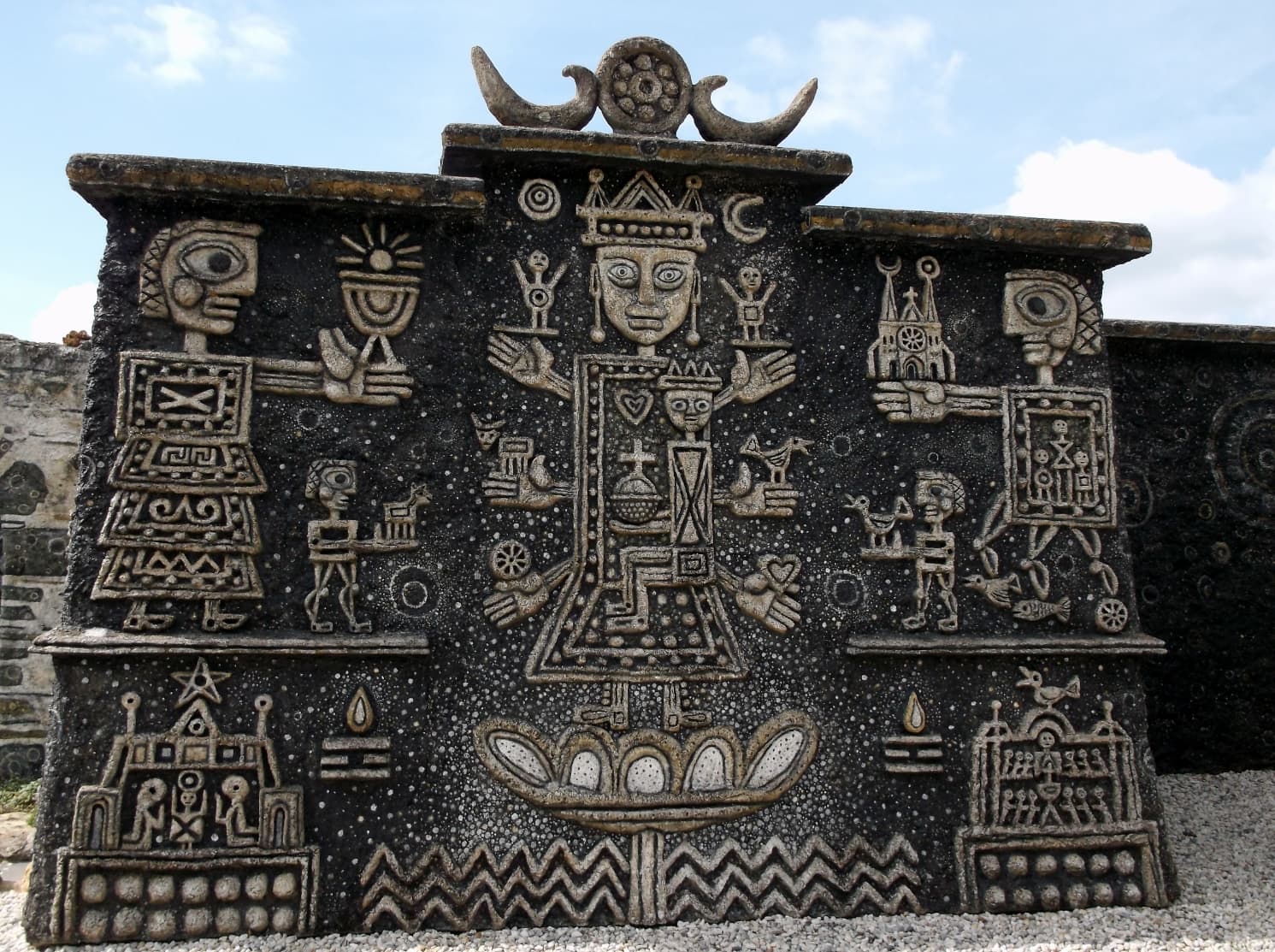
The bas-reliefs
The museum is surrounded by high walls decorated with bas-reliefs telling myths and legends of great civilizations, from the East to the West.
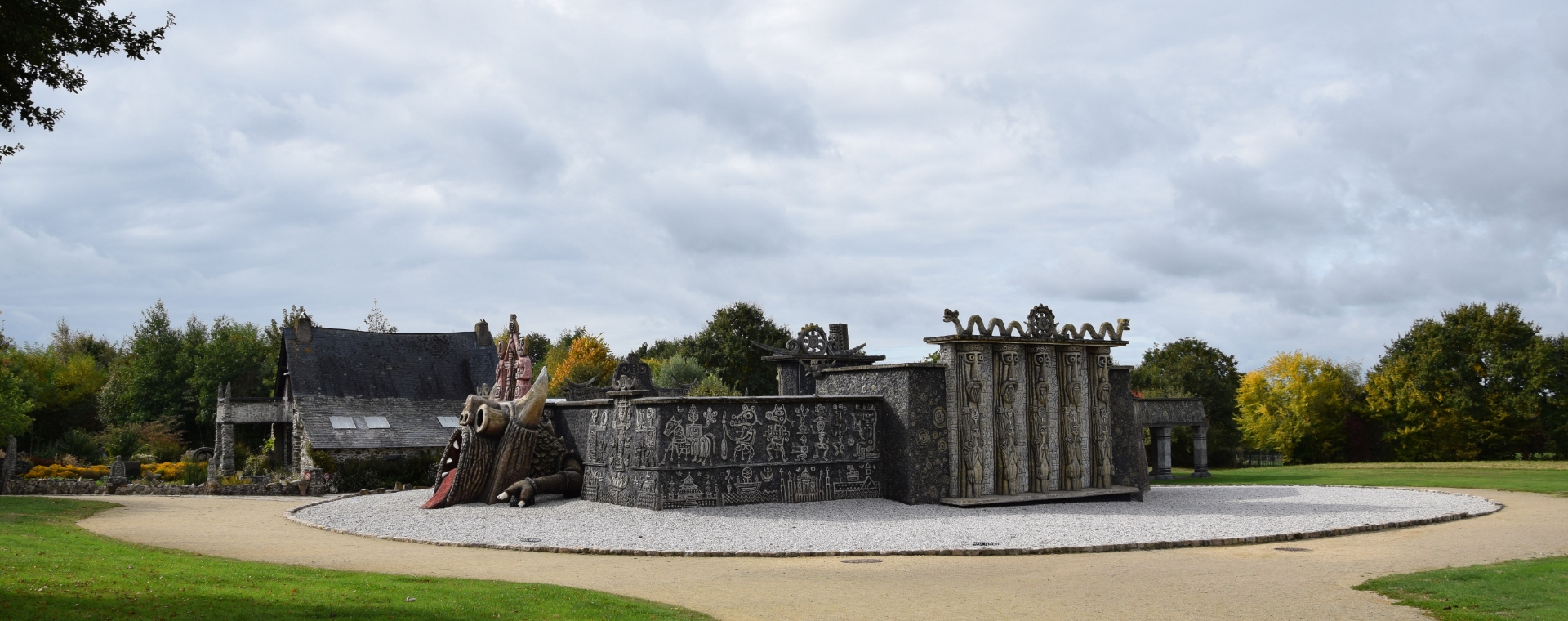
The Garden of Meditations
From the Sun Gate (La Porte du Soleil levant) at sunrise to the Moon Gate (La Porte de la Lune) at sunset, the Garden of Meditations covers 500 square meters. Around the central pool, the walkway leads to the exhibition rooms where Robert Tatin himself displayed ceramics, paintings, writings, drawings and watercolors.
Gardens
From the small vegetable garden that adjoined the house when the artist first arrived to the current estate of over six hectares, the green setting that houses the museum has never stopped evolving. The main developments around the museum were carried out from 1997 onwards in accordance with Robert Tatin’s wishes and with the desire to enhance and preserve the identity of his work. It was not a question of reproducing a garden model but of creating flowered and wooded areas as a visual, intellectual and spiritual extension of the museum.
LABYRINTH
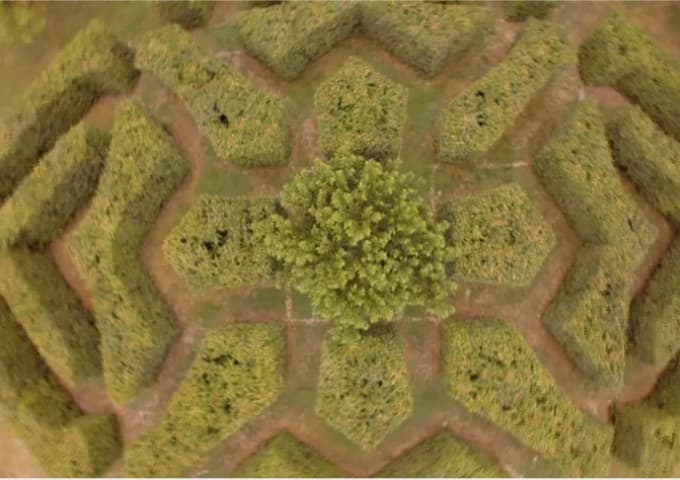
The planting of the six hundred hornbeam trees on approximately 1000 m² was carried out in 2009 based on drawings and sketches by Robert Tatin. The term labyrinth is inaccurate: it is not a question of getting lost but rather of a meditative and playful path, without any dead ends or cul-de-sacs.
BUTTERFLY REFUGE
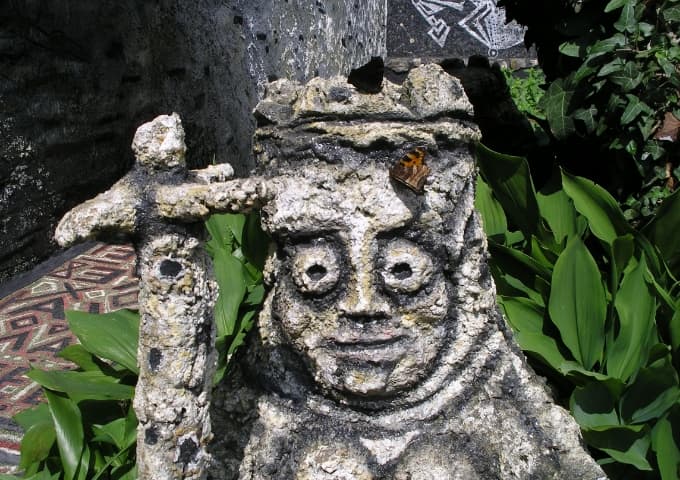
Since 2008, the museum’s gardens have been recognized as a butterfly refuge in association with the G.R.E.T.I.A. (in french Groupe d’Etude des Invertébrés Armoricains). The butterflies, particularly dependent on wild plants to meet their needs, can accomplish their entire life cycle here.
PAINTINGS
It was through painting that Robert Tatin approached artistic creation. At the age of 17 he discovered the great Parisian museums. From that time on he had an undying admiration for certain artists of the past to whom he paid homage in his own artworks.
He enrolled at the École des Beaux-Arts de Paris (Paris School of Fine Arts) and then at the fresco workshop of the École des Arts Appliqués (School of Applied Arts), where he learned the pictorial techniques that allowed him to express his thoughts and where he developed, which he claimed all his life, for the craft work of the material.
After the Second World War and until the beginning of the 1980s, international galleries promoted and distributed his paintings. Others were exhibited and won international prizes. Today, many of Robert Tatin’s artworks are scattered throughout the world, without being all catalogued.
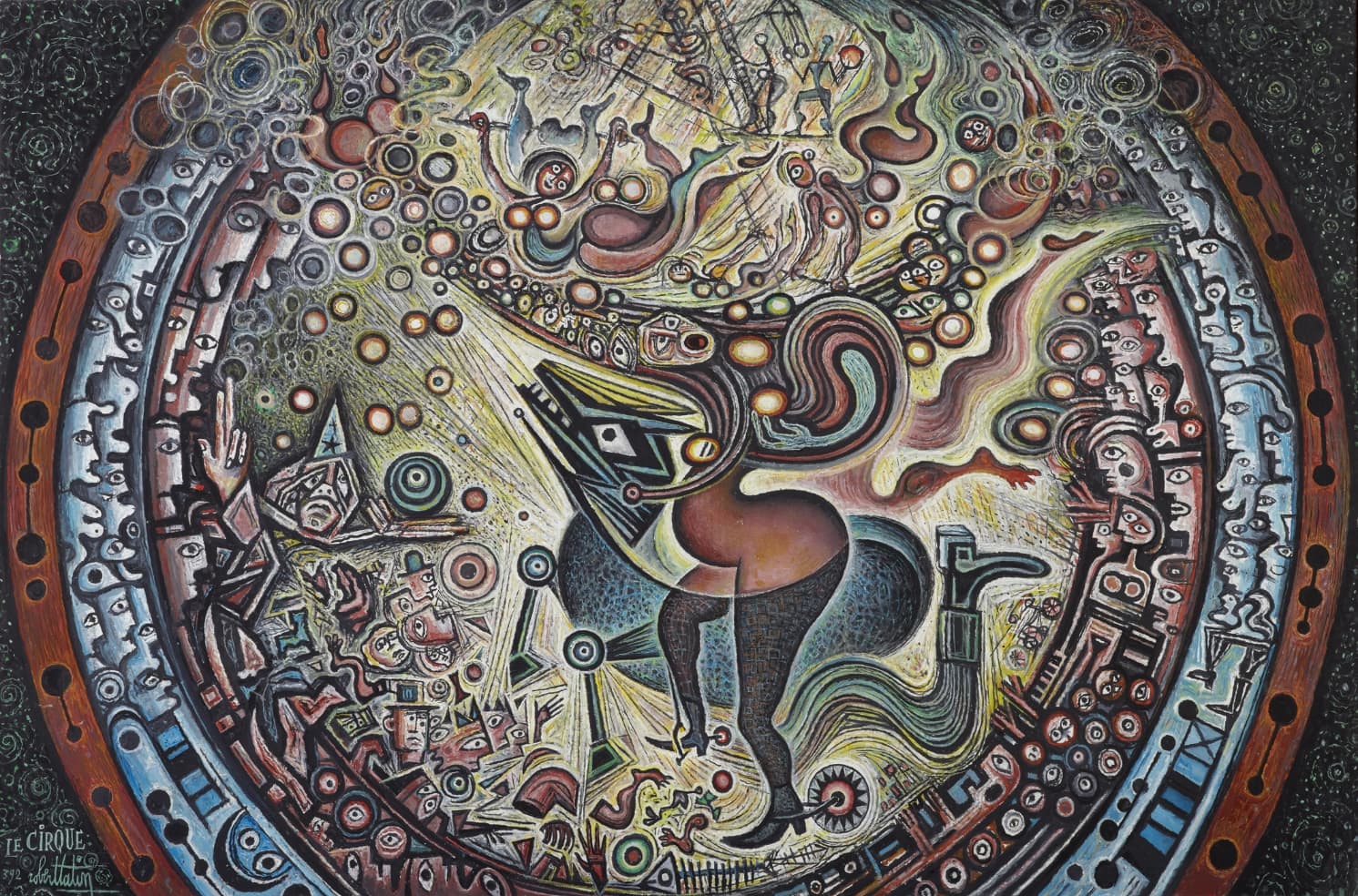
Le Cirque (The circus)
Between parties and the violence of childhood memories, the artist placed the life to come at the center of the painting, in the belly of the horsewoman. She rides a dragon between the aerial space of the trapeze artists and that of the depths, littered with severed limbs.
Oil on canvas, 1973, 130 cm x 195 cm
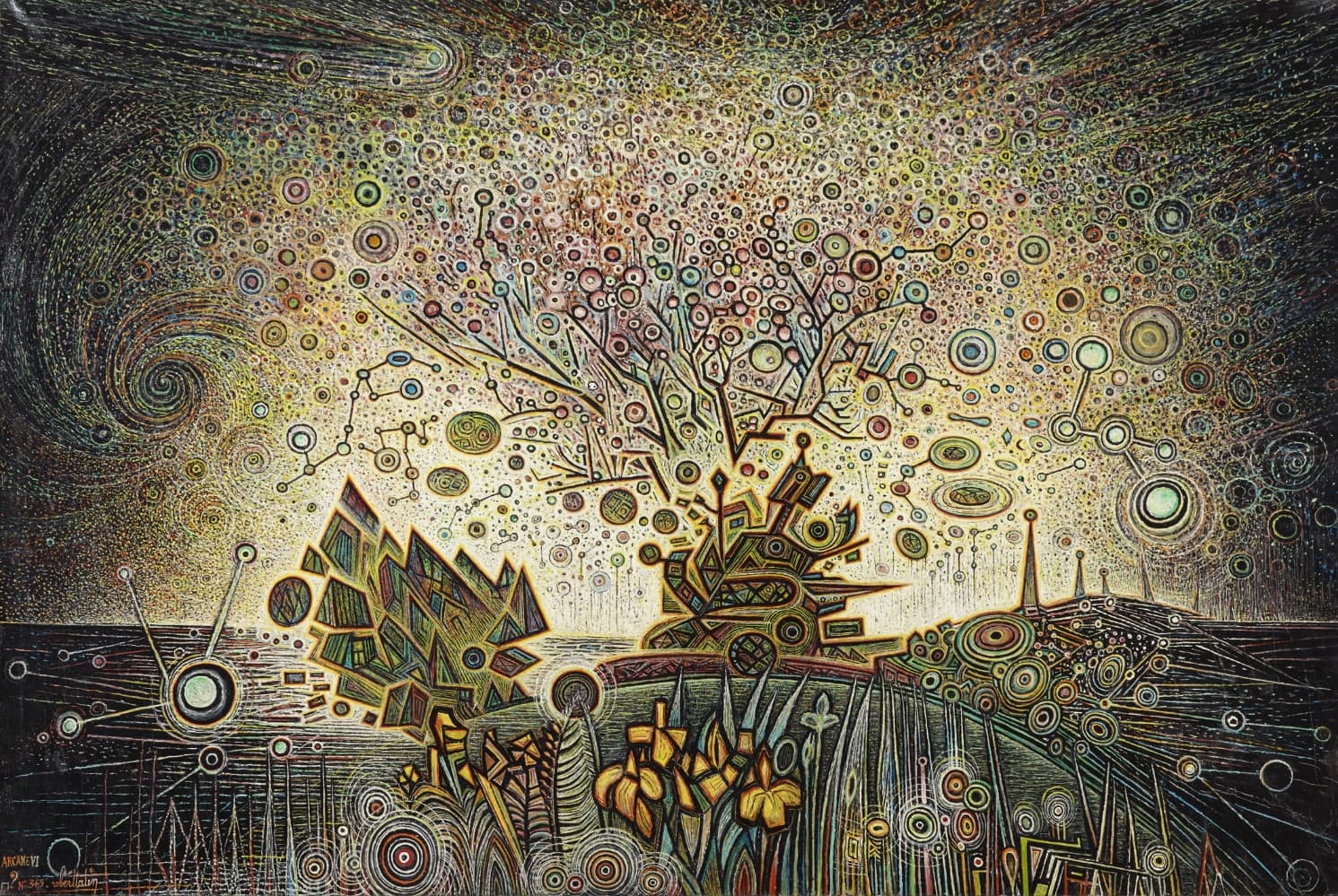
Arcane VI
When Robert Tatin settled in Cossé-le-Vivien in 1962 he saw the landscape in front of his house as a ‘promised land’. Far from the tribulations and tumults of the past, he hoped to have found love and serenity but there is no such thing as absolute happiness.
Oil on canvas, 1971, 130 cm x 195 cm
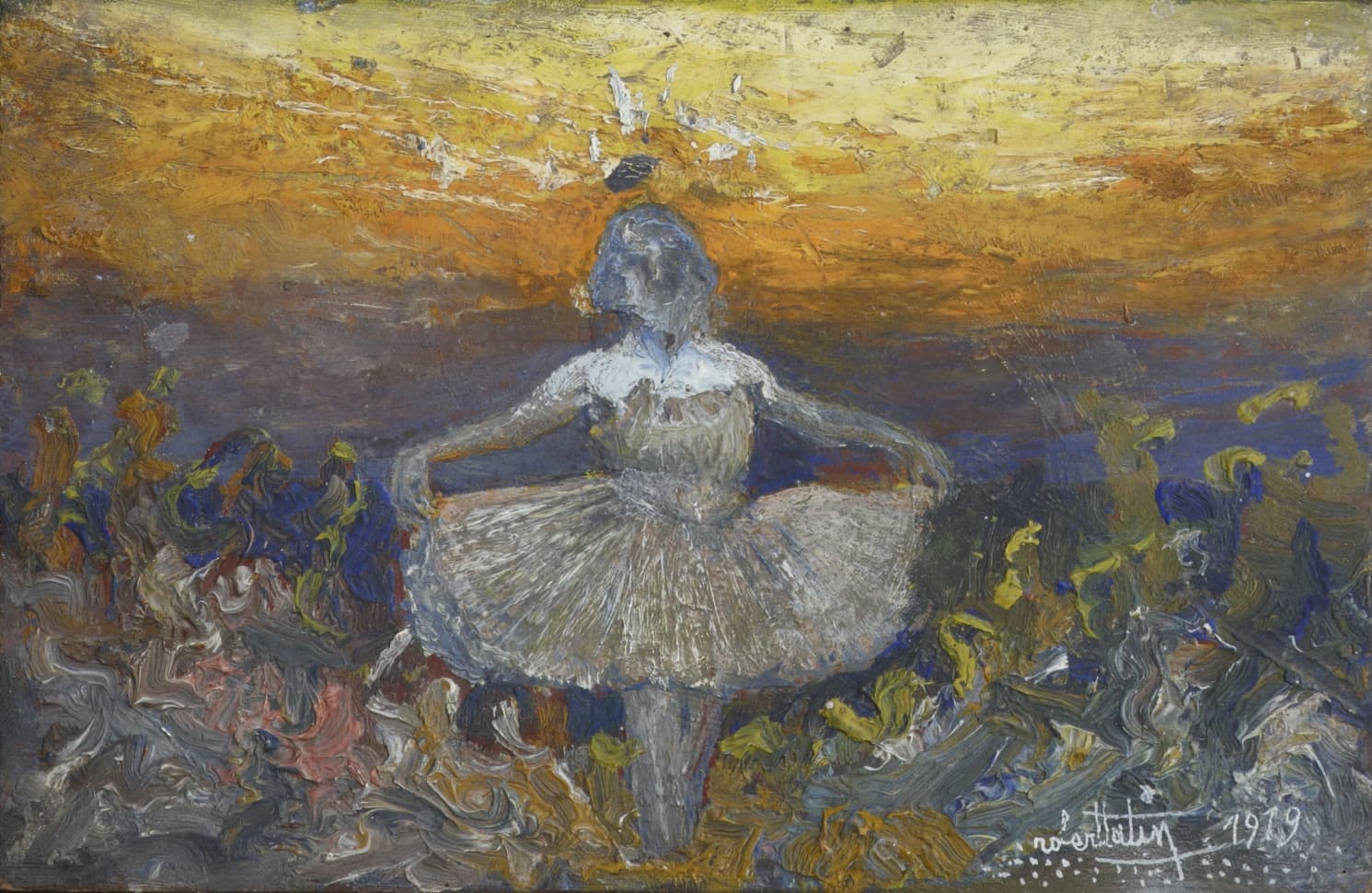
Christiane
Inspired by the Italian primitive painters in the representation of the distant backdrop as well as in the treatment of the colors, the artist represents Christiane, his first love.
Oil on wood, 1919, 13.5 cm x 21 cm
CERAMICS
It was modeling clay that gave Robert Tatin his first artistic fame. In 1947, in his Parisian “bougnat” (coalman shop) converted into a small ceramics studio on rue de la Cerisaie, he used to receive Jean Dubuffet and Jacques Prévert… The critics were enthusiastic and the press wrote glowing articles about him. However, his refusal to compromise led Robert Tatin to decline the invitation to exhibit his ceramics with the Compagnie de l’Art Brut (Art Brut Company) and in 1950 he left for South America.
With the support of Matarazzo Sobrinho, a major figure in Brazilian art, he continued to experiment with innovative techniques and won a first prize at the first São Paulo Biennial in 1951. From then on, he had one exhibition after another. Robert Tatin set up his studio with the same success in Buenos Aires and became one of the important figures in the renewal of ceramic art in the middle of the 20th century.
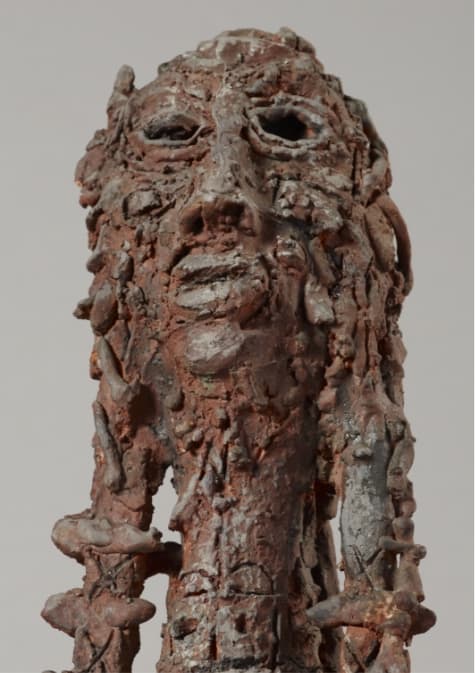
Patcha Mama
An omnipresent divinity in the pantheon of Central American cultures, Patcha Mama is the Mother Earth, the Earth-nurturer.
Colored terra cotta, 1954, 31.1 x 19.5 x 12.2 cm
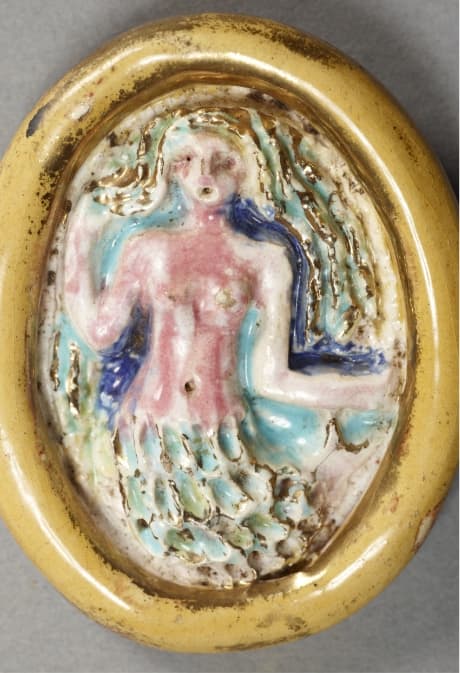
Broche Sirène
Represented on this brooch, the theme of the mermaid is recurrent in Robert Tatin’s creations. It evokes the myth of the fantasized woman, omnipresent and inaccessible.
Enameled clay, 1948, 6.7 x 5.5 x 1.8 cm
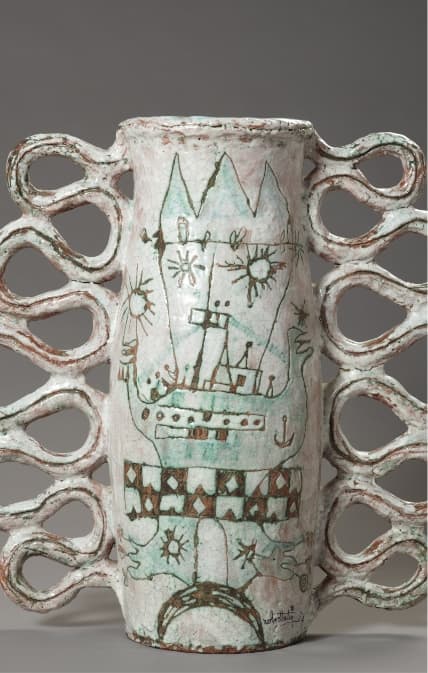
Grand vase au bateau
It was in his studio in Buenos Aires that the artist, at the height of his fame, created the Large Vase with Boat. At that time, he described himself as “a painter of earth” for whom the technical aspects of color were of primary importance.
Enameled terra cotta, 1954, 70 x 25 x 65 cm
DRAWINGS AND PRINTS
Sketches, gouaches and watercolors were all ways for Robert Tatin to observe the world around him. They were more than just travel journals; they were the result of a keen and assiduous observation of nature and the men and women he met. The artist used to renew his pictorial studies and multiply the colored experiments. Many lithographs enhanced with colors are studies necessary for the final work painted on canvas. Plans and drawings are also essential and daily tools for the conception of the statues and monuments that make up his museum.
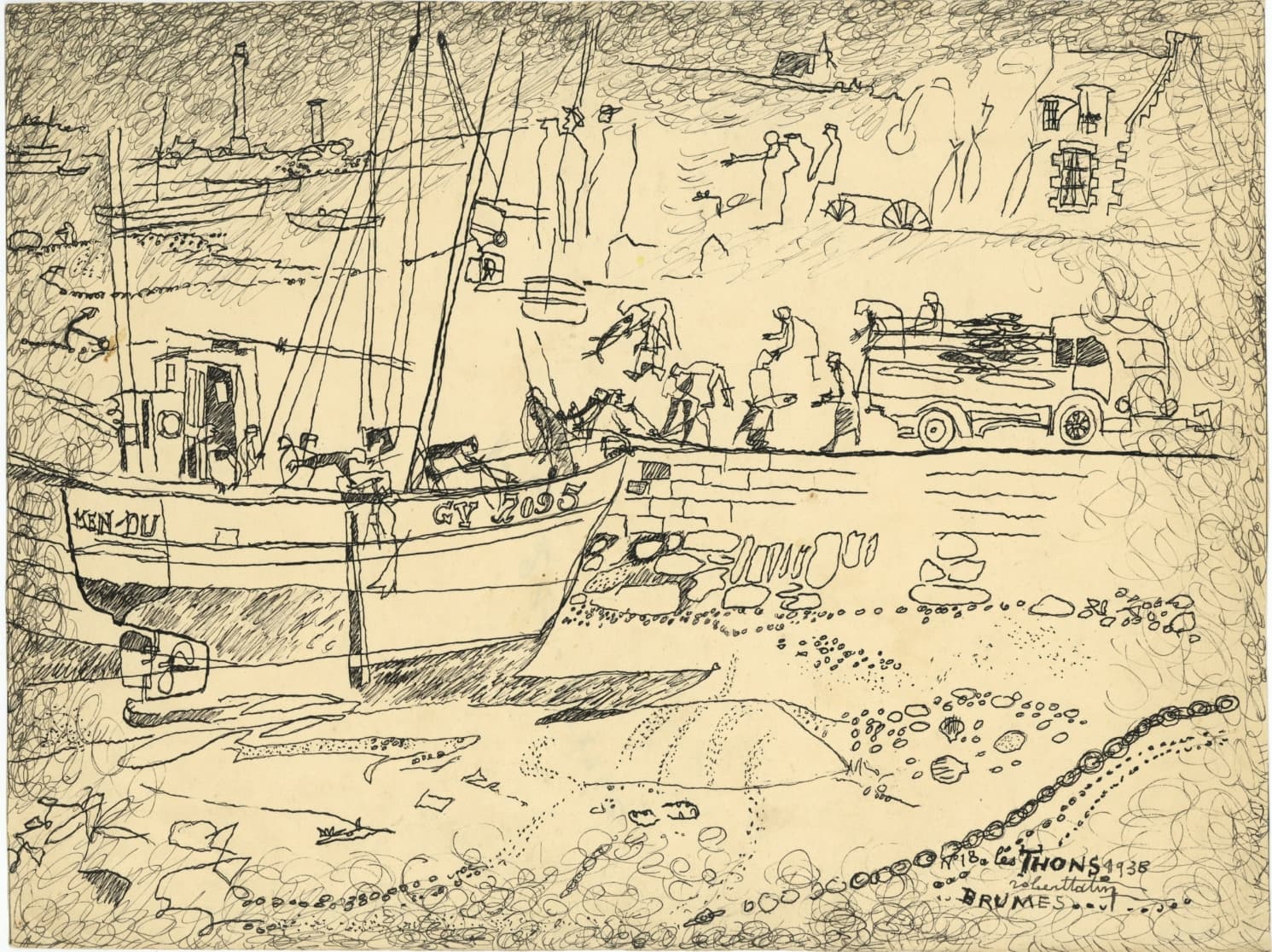
Les Thons
During his travels, Robert Tatin was a keen observer of daily life. Here in “Tunas” we can see the speed of execution but the line remains precise and delicate.
India ink on paper, 1960, 26.2 x 34.8 cm
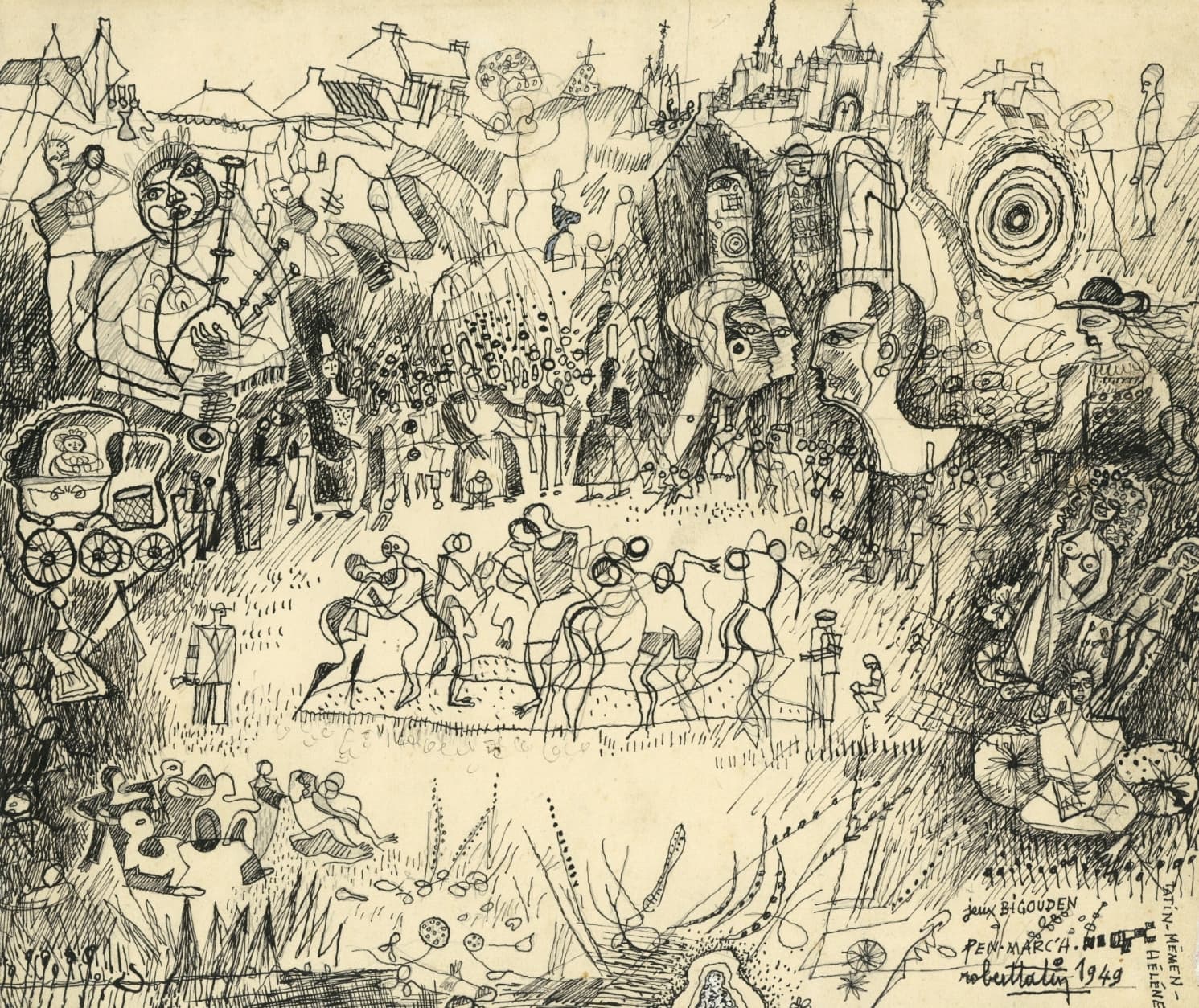
Jeux Bigouden Pen Marc’h
Robert Tatin’s childhood was lulled by the tales and legends of Brittany. In his drawings, sketched from life, he transmitted popular traditions and folklore from the mists of time.
India ink and pencil on paper, 1949, 25.8 x 30.7 cm
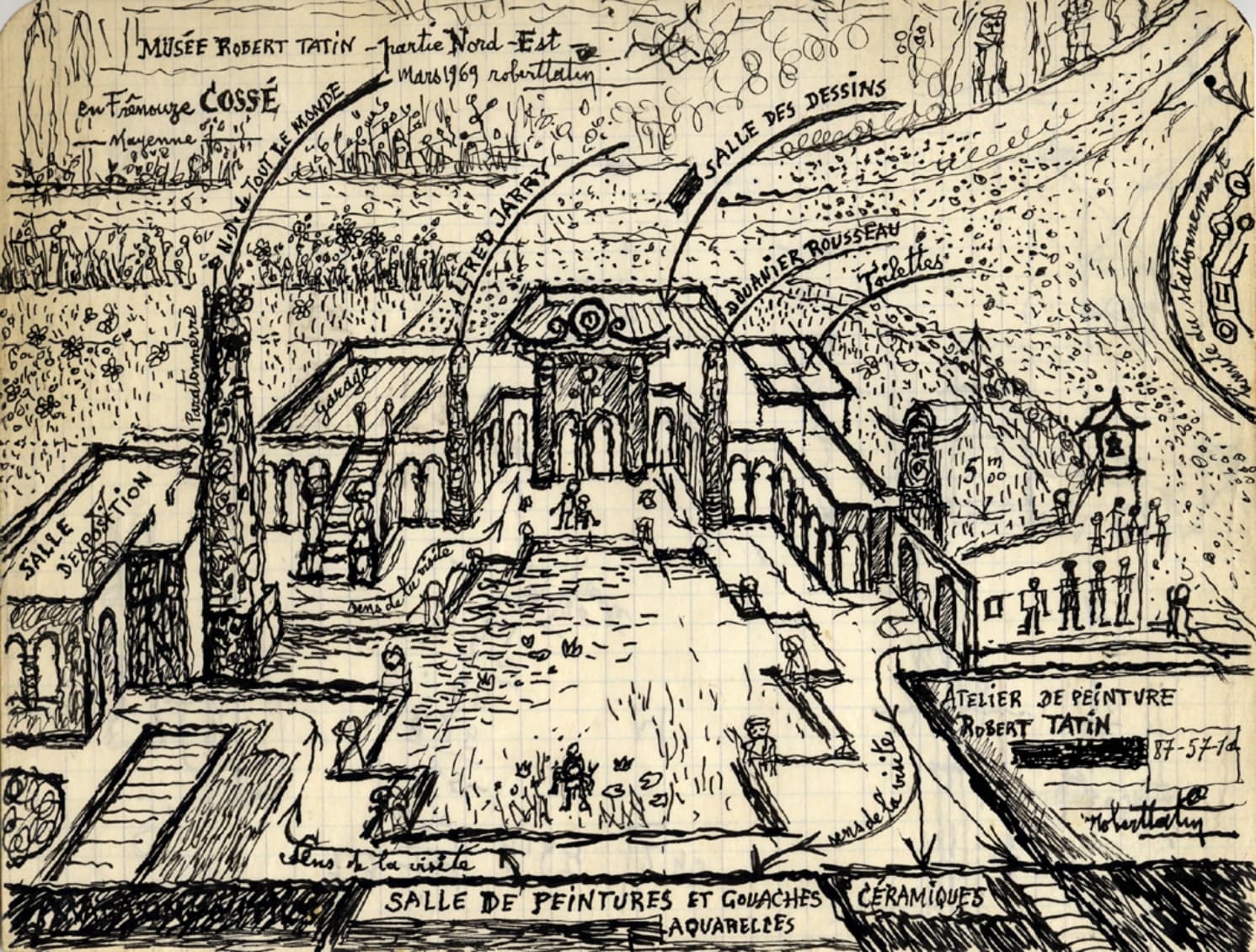
Vue d’ensemble
This bird’s-eye view provides a fairly accurate view of the museum from 1969. Although not all the monuments were designed at that time, the general structure was already in place.
Ballpoint pen and pencil on paper, 1966, 26.8 x 20.9 cm
TEXTILES
From 1968 to 1976, Robert Tatin set up a sewing workshop on the first floor of his house in La Frênouse. A seamstress and embroiderer made clothing and accessories designed by the artist: these creations all bore the signature Atelier Robert Tatin (ART). Responding to commissions from collectors and friends, the artist, who was very attentive to the choice of materials, created custom-made garments adorned with decorations that reflected their personality or contemporary events. These pieces illustrate the variety of Robert Tatin’s fields of inspiration and feature motifs that he also explored in the other forms of expression of his art.
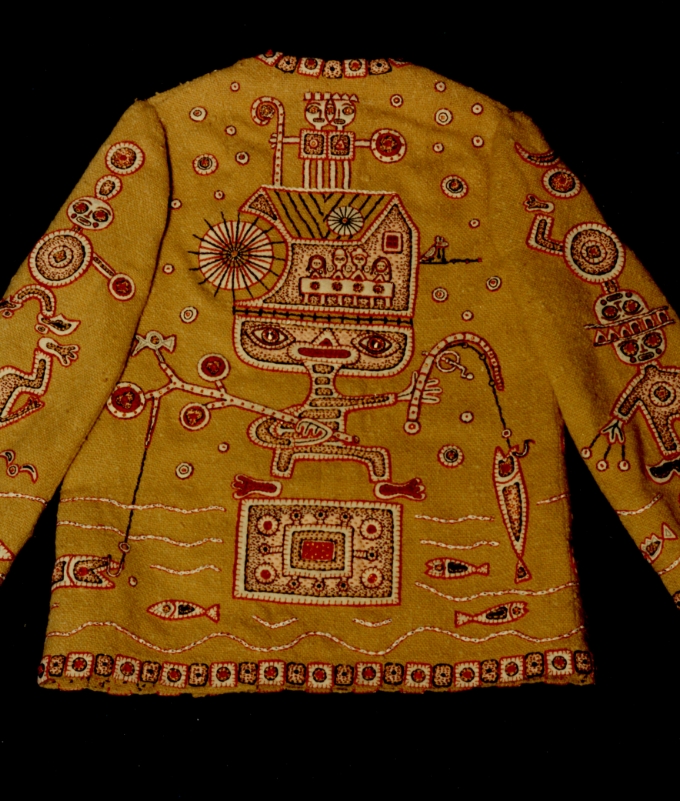
Veste au pêcheur
This Jacket with a Fisherman is the result of a long friendship and artistic complicity from which the personality of the wearer emerges. The character seems to be divided between the image of his family sitting around the house and the exaltation of angling.
Wool sheet, felt and glass cabochons, 1974, ART, 77 x 57 cm.
Gift of the Maunoury family
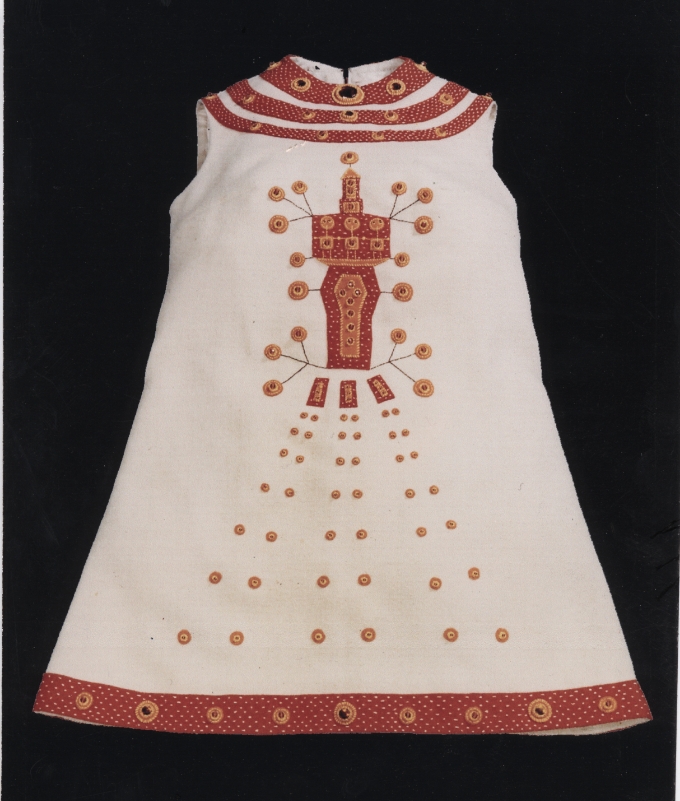
Tunique-Apollo 11
At the end of the 1960s the conquest of space was on everyone’s mind. Robert Tatin was inspired by man’s first step on the moon. The three astronauts with confident smiles were propelled into space.
Wool sheet, cotton, pearls and glass cabochons, 1974, ART, 83 x 63 cm.
Gift of the Maunoury family
THE SCULPTURE FIELD
Faithful to the wishes of Robert Tatin, the museum remains a place of innovation and creation where the art of other creators continues to be expressed. The sculpture field continues Robert Tatin’s dream of a village of creators, alive and moving.
Starshaman le taureau céleste

“Starshaman the Celestial Bull” is a bull king, caparisoned in varnished steel, invincible, powerful and delicate at the same time. The familiar animal of the countryside, omnipresent in myths and mythologies from every continent, invites us into a dreamlike universe that is inseparable from the work of Robert Tatin.
Anthony Trossais, 2006, steel, 250 x 200 x 480 cm
Vie et mort du bélier
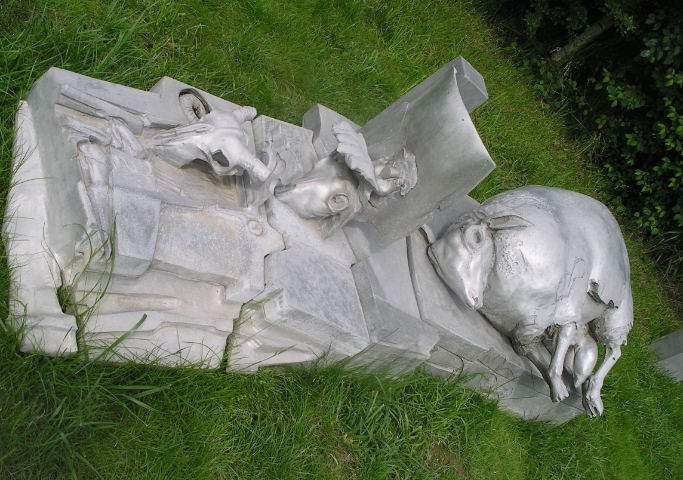
Doubt and anxiety are omnipresent in Sylvain Hairy’s work, which is both disconcerting and troubling. “Life and Death of Ram” has the beauty of ruins: death is as if immobilized, suspended…
Sylvain Hairy, 1979-82, aluminium, 80 x 300 x 90 cm